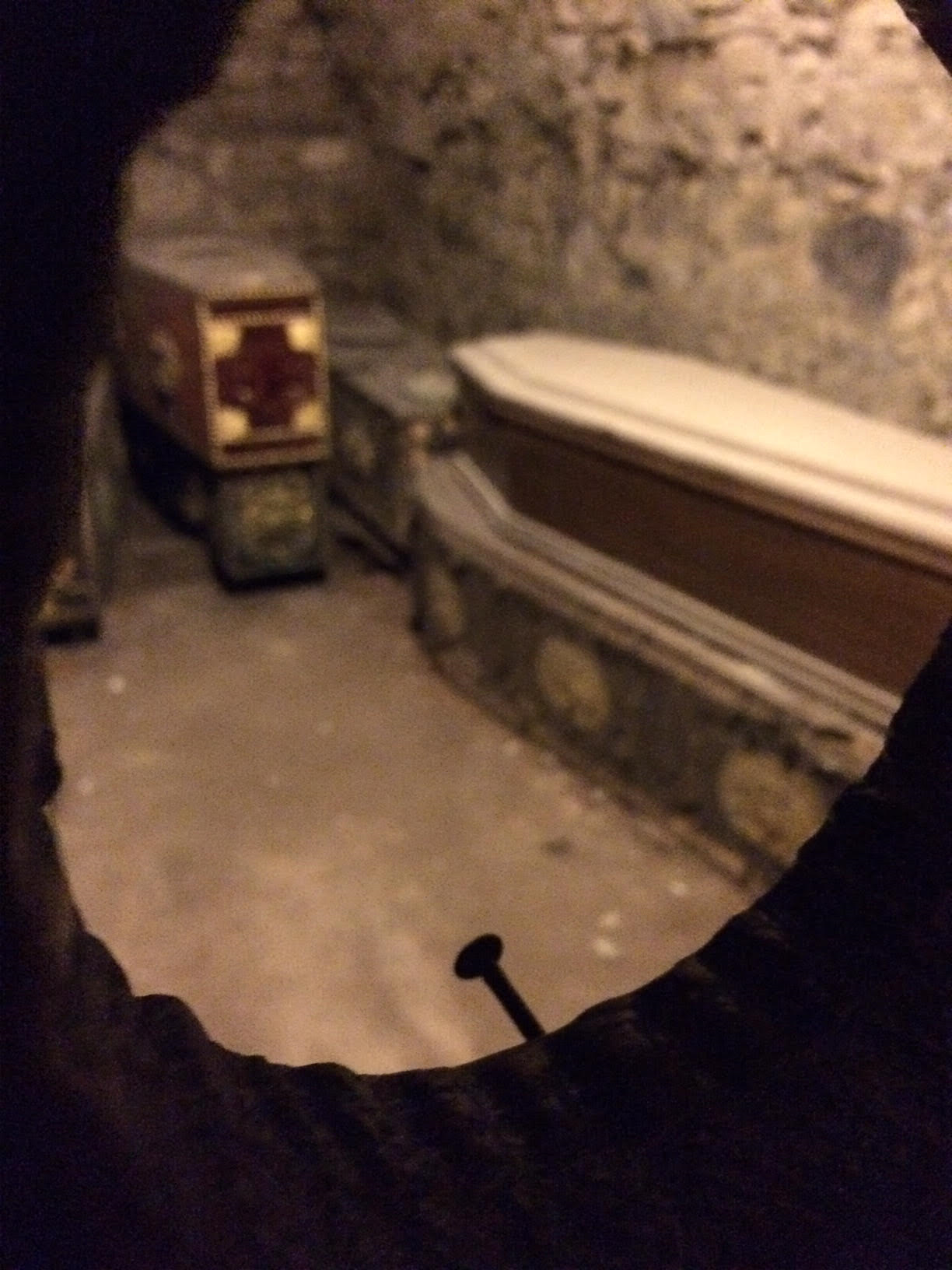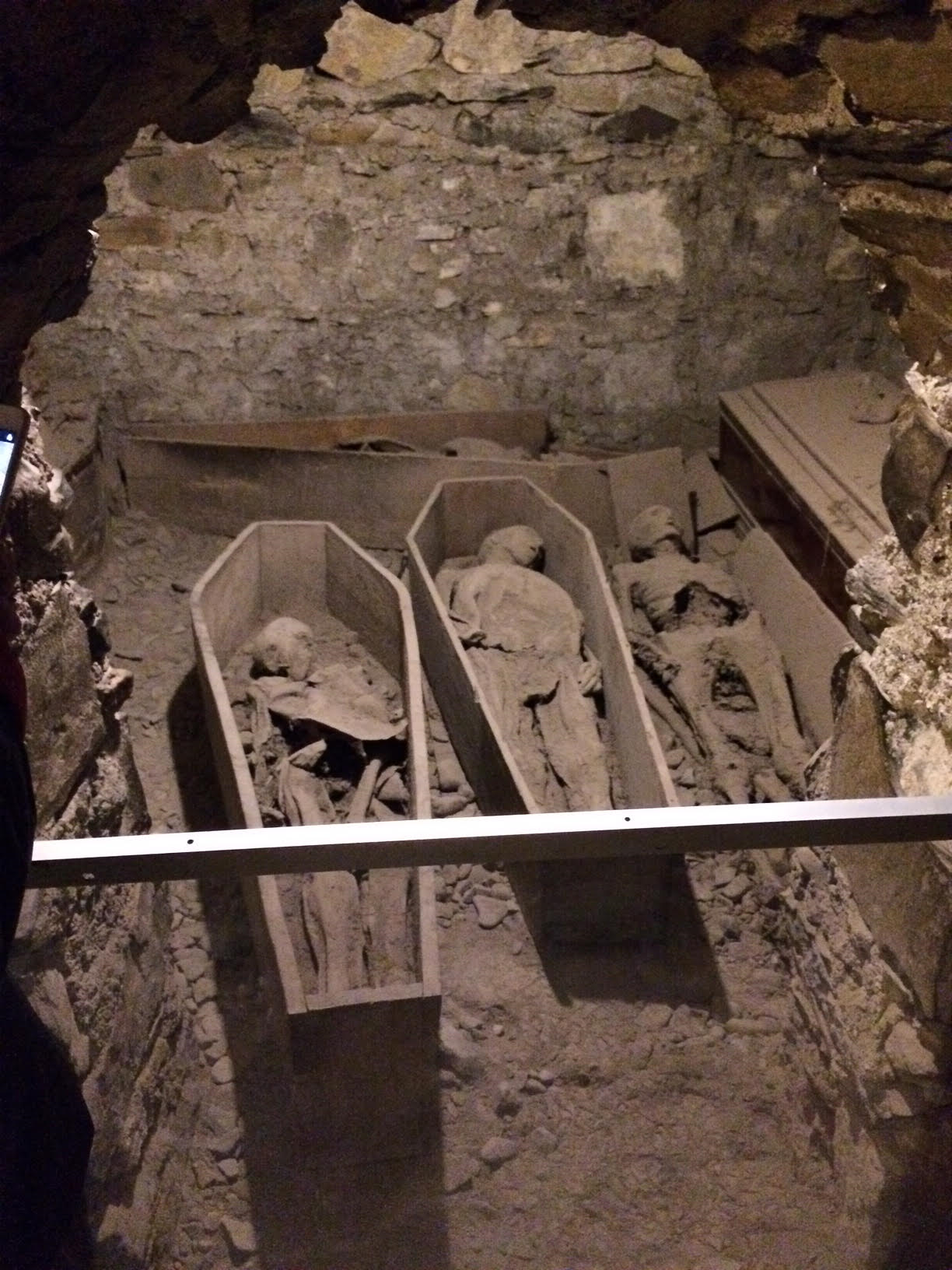
A view into one of the vaults in the crypt beneath St. Michan’s Church, Dublin (photo by Stephen Morris)

A view of another vault beneath St. Michan’s, in which some of the mummies are exposed. The corpse on the left is an early medieval nun, the one is the middle had a hand cut off (accident? criminal punishment?), and the one on the right is a medieval man.
The church of St. Michan in Dublin is a fascinating place! Dublin was first settled by Danish Vikings (“Dublin” is derived from the Viking word for “Black Pool,” referring to the swampy ground the city was founded on) and Michan was apparently a Danish or Danish-Irish monk from that early 10th-11th century period. The church itself was first built in AD 1095 although the current building was erected in 1686 on the older foundation. It was the only parish church on the north side of the River Liffey (i.e. outside the city walls) for centuries.
In the crypt beneath the church are several vaults that were used to inter the coffins of the dead. These were preserved and expanded during the reconstruction of the building. Many of the coffins in the underground vaults date from the early Middle Ages although many also date from more recent times: leaders of a failed rebellion in 1798 are also interred here.
Because opening a sealed coffin is illegal — it is part of the crime of grave-robbing — no one realized there was anything unusual about the corpses below St. Michan’s until the older coffins began to break open as the weight of the newer coffins stacked atop them became too heavy. The coffins that broke open revealed that the corpses, which had not been treated in any unusual way, had all been mummified and preserved. This was probably due to the limestone used to build the vaults and the methane gas of the swamp below the foundations of Dublin. Limestone absorbs moisture and the constant cool temperature of the vaults helped preserve and mummify the bodies as well. The presence of methane reduces the amount of oxygen in the crypt and therefore reduces the amount of bacteria etc. that leads to more normal decomposition. (We presume that the corpses in the newer coffins are also becoming mummies as well although we won’t know for sure until the newer coffins break open as well. The vaults are still used on occasion for new internments so there is always the possibility of additional weight to break open the coffins that haven’t broken open — yet.)
Bram Stoker is thought to have visited the vaults in the crypt below St. Michan’s and possibly to have found inspiration there for at least a few of the scenes in his classic Dracula.
The church of St. Michan is very near the new Teeling whiskey distillery in Dublin, making a visit to both sites an easy excursion.
